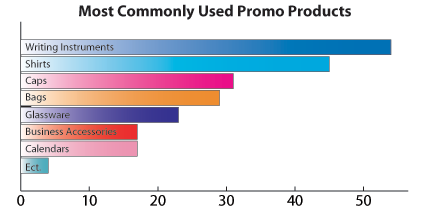Do Promotional Products Add Value to your Exhibit Plan?
March 02, 2010

By: Barry Siskind
Last month I posted a question on the TSEA (Trade Show Exhibitors Association) Group/Linkedin about the use of promotional products. Forty-five comments later and the discussion is still going strong. Comments ranged from those who thought promotional products were a waste of time and resources to those at the other end of the spectrum who found them very useful.
Tote bags, pens, mouse pads, lanyards, CD’s, note pads, candy, gizmo’s for your computer, stress balls, luggage tags, buttons, pins, card holders, golf tees, sweat bands, mugs… don’t you just love it? Lots of people do. Ask visitors why then attend certain shows or what they remember best and they say - “all those cool giveaways.”
Ask them what they remembered more, the give away or the exhibitor, and nine time out of ten the answer is the give away. So, does the investment in promotional products at a show make sense? Sure it does. But there is more to making a promotional product work. It’s serious business and requires some intense thought.
A study by the Promotional Products Association International reported some interesting findings:
Of the people who received a promotional product in the last 12 months,
- 76% could recall the adversities’ name
- 52% did business with the advertiser
- 52% had a more favorable impression of the advertiser after receiving the item.
- 34% had the item on their person
The advertising specialty people like to use cost per impression as their method of measurement. A study by the Advertising Specialty Institute found that bags topped the list with a staggering 1,038 impressions per month per bag given away. Caps were next with 476 per month followed in descending order by shirts (365), writing instruments (363), business accessories (294), glassware (251) and calendars (227).
The other noteworthy response was that in terms of wearables. The average respondent usually kept the article for seven months, bags were nine months and glassware seven.
The study reported that the most commonly used products were writing instruments (54%), shirts (45%), caps (31%), bags (29%), glassware (23%), business accessories (17%), calendars (17%) and other wearable’s (4%).

How often does a respondent will use the product?
- Nearly one third who receive glassware used it at least once per week, and another one quarter used it once per day.
- 40% of writing instruments were used at least twice per day.
One further noteworthy finding was that 42% said their impression of the company who gave them a promotional product was more favorable after receiving the item. The only exception here was bags where the number increased to 53%.
Here is a sampling of the positive and helpful comments that were posted on the TSEA Linkedin Group.
- The promotional product should be a thank you item not a must have item.
- Can be used effectively to reinforce the brand.
- A great way to reward survey respondents.
- Consider the environment and choose products with a longer life cycle and better quality.
- Integrate the promotional product into the overall lead generating strategy.
- Use as prizes in conjunction with a contest. This can motivate customers to spend more time in the booth.
- Make sure the promotional product is tied to the overall messaging and theme of the display.
- Don’t give away stuff for kids.
- Train staff on how and when to hand out a promotional product.
The debate rages on. Some love promotional products and swear by the benefits they receive while others avoid the discussion altogether. But, in an age when we need every advantage we can to make our show participation memorable, perhaps promotional products deserve another chance.





